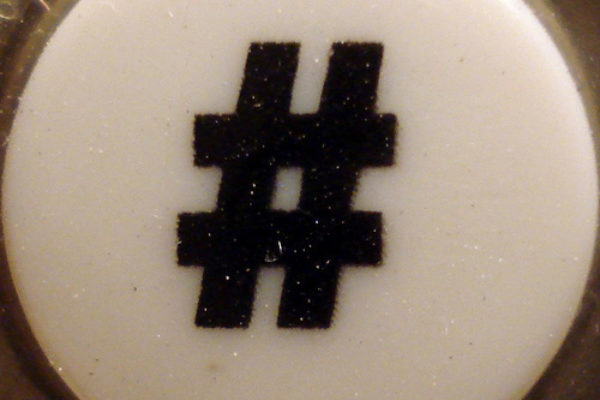Twitter chats – or planned conversations linked together through a common hashtag – can be valuable tools for brands and organizations, higher education included. Dave Tyler, of The College at Brockport shared his experiences engaging with his institution’s community this way in his presentation, “Is This Hashtag Really Necessary: Taking the Plunge into Twitter Chats.”
Before he dove into what his campus did, though, Tyler began his talk by sharing some failed Twitter chat attempts from major brands and personalities. For instance, E.L. James, author of Fifty Shades of Grey, was heckled during an “ask the author” event sponsored by her publisher; she trudged through anyway, ignoring the negativity. (Ex: Twitter user Pandamoanium asked “Is there a safe word we can use to get you to stop writing such drivel?”)
Angry customers hijacked an #AskJPM chat sponsored by financial giant JP Morgan Chase before it even began. An advertised #AskBobby (as in Bobby Jindal) Twitter chat was canceled before it began because of a flood of critical questions and comments. And there was a Trump example; but we’ll just leave it at that.
The lesson here, Tyler explained, is that you must know your audience and the medium before you open the Twitter-gates; it’s an open platform to begin with, but a hashtag can be an invite for not-so-pleasant interactions.
The first Twitter chat example Tyler shared was a take-over by the then new-ish Brockport president Heidi Macpherson (#bportprezchat) to introduce her to the community. His team promoted the chat on social media and email, and they also enlisted a team of young alumni social ambassadors to help spread the word within their networks. Then, for one hour, the president answered questions tagged specifically for the event. Tyler recalls that the event started slowly: no questions for four minutes. The momentum picked up, and the president ended up answering 32 question. Not one was left unanswered—even the silly ones (such as “is it pop or soda?”).
Twitter engagement that day was four times higher than usual. Tyler noted that a live town hall meeting may only have so many attendees, but opening a conversation on Twitter can perhaps reach farther.
To rewind a bit, to prepare for the chat, Tyler and his team did research—they asked students and interns what they might want to know from a new president. They used this information created a briefing sheet to help serve as a quick reference for the president.
The second example was a Twitter chat about a campus improvement project; the construction team for that project stood by to answer questions. He admitted that this chat was not promoted as well as the presidential chat, and it also didn’t spawn as many questions—22. Tyler also said it was more challenging to have five people reply to messages than a single person. But he still considered it a win. He added that even if the chat doesn’t at first seem a success, remember that you can archive the conversation on the web. This means the questions and answers can have a permanent home and continue to help people—and continue to get views.
What did he learn from Twitter chatting?
- Listen before you chat. Be aware of what others are saying about you.
- Eliminate distractions. (Ex: a quiet room)
- Have snacks and drinks on hand – fuel those who are working on the chat!
- Go for longer than an hour; it may be necessary.
- Consider more publicity.
- Have successive chats planned closer together to build on momentum.
Tyler ended his presentation with an enthusiastic and encouraging, “Don’t be afraid!”
So, do it. Embrace the hashtag and Twitter chat love, and answer some questions from your community. You never know what you might find out. Did you know the Brockport prez can ride a unicycle?

